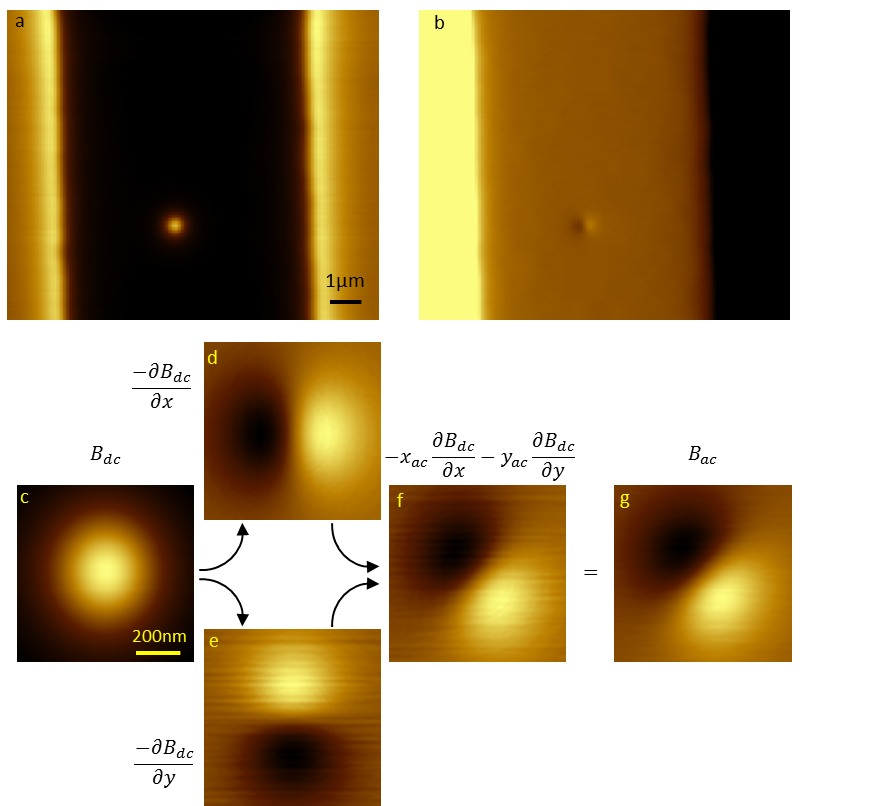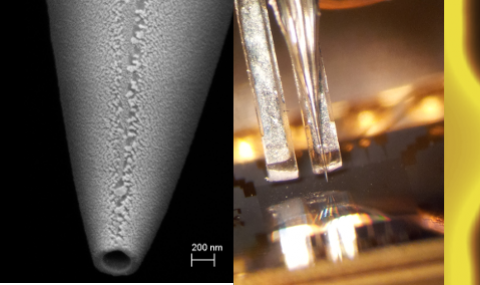The scanning SOT microscope was used to investigate the dynamics of quantized magnetic vortices and their pinning by materials defects in lead films with unprecedented sub-Angstrom sensitivity to vortex displacement. We measured, for the first time, the fundamental dependence of the elementary pinning force of multiple defects on the vortex displacement, revealing a far more complex behavior than has previously been recognized, including striking spring softening and broken-spring depinning, as well as spontaneous hysteretic switching between cellular vortex trajectories. Our results indicate the importance of thermal fluctuations even at 4.2 K and of the vital role of ripples in the pinning potential, giving new insights into the mechanisms of electromagnetic response of superconductors.

- Scanning SQUID-on-tip image of Bdc(x,y) showing a single vortex (bright) in a thin Pb film patterned into an 8 µm wide microbridge at T = 4.2 K. The microbridge is in the Meissner state (dark), and the enhanced field outside the edges (bright) is due to the screening of the applied field of 0.3 mT.
- Scanning image of Bac(x,y) acquired simultaneously with (a) showing the vortex response to an ac current of Iac = 0.94 mA peak-to-peak (ptp) at 13.3 kHz applied to the microbridge. The Meissner response is visible along the microbridge (Bac = 0, light brown) with positive (negative) Bac outside the left (right) edge due to the field self-induced by Iac.
- A zoomed-in image of the measured Bdc(x,y) of a vortex.
- (d-f) Numerically derived ∂Bdc/∂x, ∂Bdc/∂y and −xac∂Bdc/∂x−yac ∂Bdc/∂y with xac = 1.6 nm and yac = −1.9 nm values obtained by a fit to (g).
- see (d)
- see (d)
- Experimentally measured Bac(x,y) of the vortex driven by Iac acquired simultaneously with (c).


